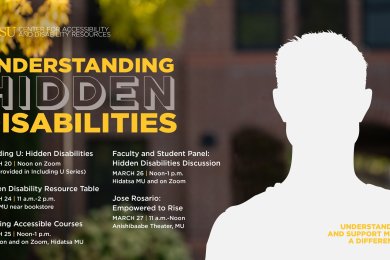A team led by Erik Hobbie, NDSU professor of physics, coatings and polymeric materials and director of the graduate program in materials and nanotechnology, received an award of $427,935 from the National Science Foundation to advance cutting-edge knowledge in ‘sustainable materials science’ terms of manufacturing clean quantum dots.
Quantum dots – tiny bits of a crystalline semiconductor – are commercially valuable due to their ability to emit bright, tunable light under constant excitation, a feature that recently earned them a Nobel Prize in Chemistry. Achieving bright fluorescence, particularly in the blue-to-green range, is especially challenging without using toxic materials like lead. Quantum dots are familiarly used in QLED television displays. The grant activity focuses on manufacturing challenges involved in synthesizing and processing state-of-the-art fluorescent silicon carbide (SiC) quantum dots, from precursor to final product.
“Because we use nontoxic, earth-abundant materials like silicon and carbon, the research fits in with the broader NDSU effort in what we call, ‘sustainable materials science,’” Hobbie said.
Unlike silicon, SiC quantum dots have not yet demonstrated bandgap photoluminescence (PL); existing PL observations are attributed to impurities and defects. This research seeks to address this issue and advance the field of quantum-confined nanocrystalline SiC materials. It holds broad implications for defect tolerance and control in wide-bandgap semiconductors.
“It’s a real test of the limits of the state-of-the-art in terms of manufacturing clean quantum dots from wide bandgap material,” Hobbie said. “It’s high-risk, high-reward. We can push the limits on quantum confinement using these non-toxic materials.”
The award, titled “High-Yield Blue/Green Luminescent Silicon-Carbide Quantum Dots from Liquid Precursors,” is funded by Award No. 2350507 of the Division of Civil, Mechanical and Manufacturing Innovation (CMMI) of the National Science Foundation. CMMI advances the future of manufacturing, the design of innovative materials and building technologies, infrastructure resilience and sustainability, and tools and systems for decision-making, robotics and controls.
“Breakthrough research in materials science has long been a significant part of NDSU’s scientific portfolio,” said NDSU vice president for research and creative activity Colleen Fitzgerald. “This new investment of federal funding from the National Science Foundation into work led by Professor Hobbie has strong potential to advance impactful sustainable materials science and potentially a game-changer in quantum dots manufacturing.”



